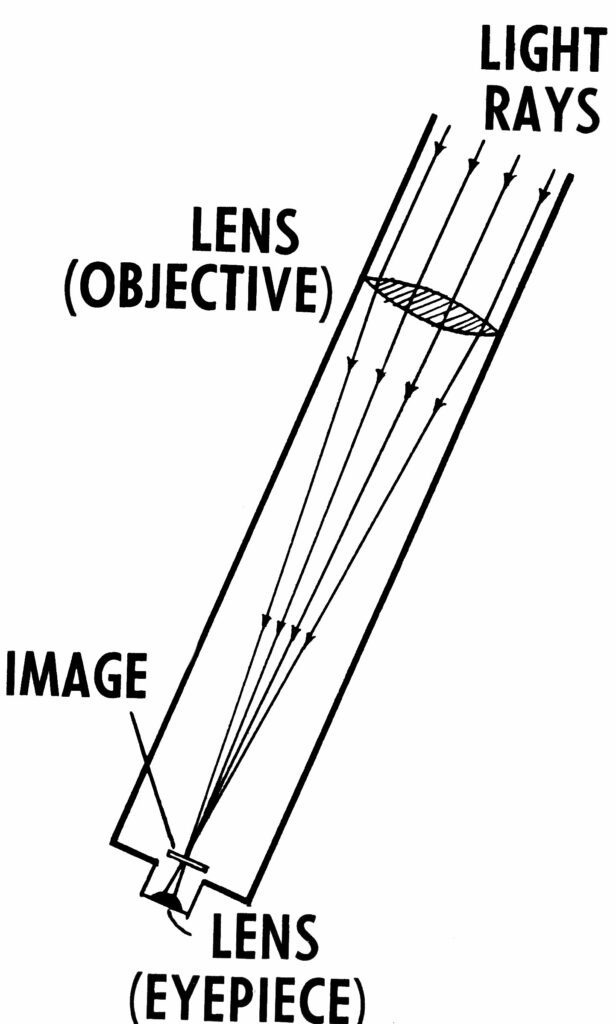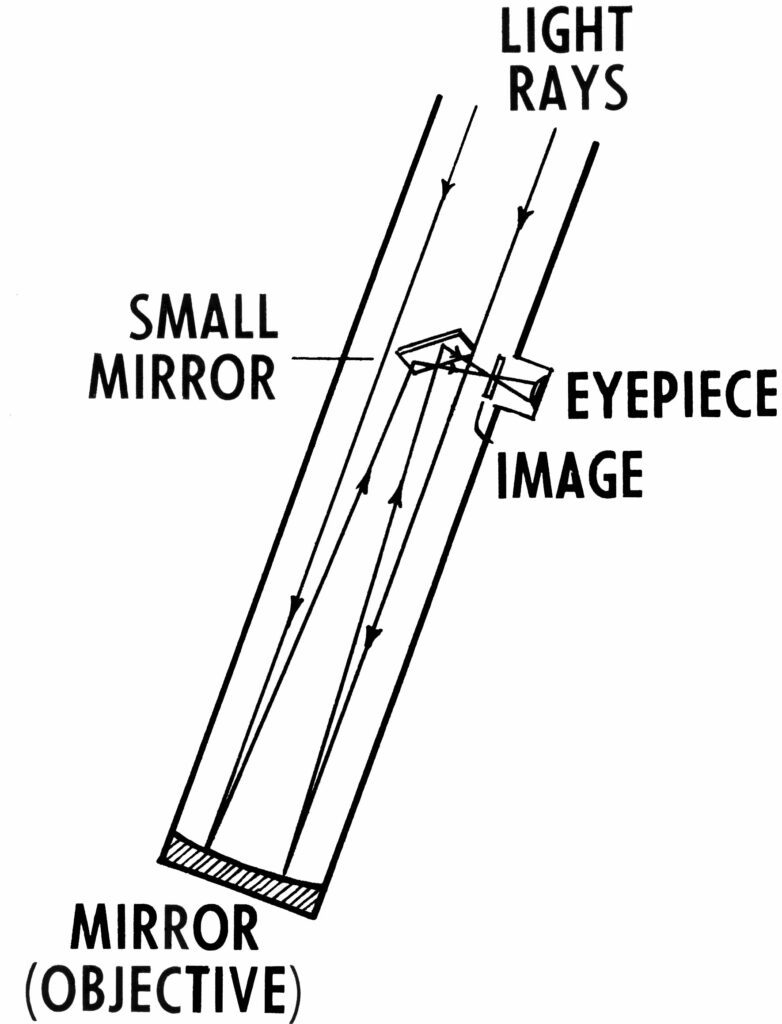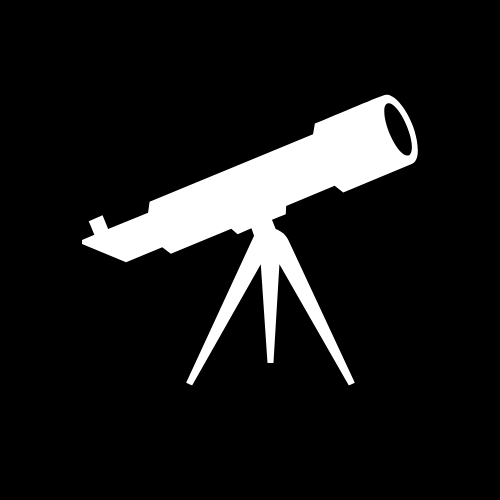3 main types of telescopes
Astronomy has been a fascinating hobby for people for centuries. With the advancements in technology, amateur astronomers now have access to high-quality commercial telescopes. There are 3 main types of telescopes available for astronomers: Refracting telescopes, Reflecting telescopes, and Catadioptric telescopes.
| Telescope Type | Mechanism | Pros | Cons |
|---|---|---|---|
| Refracting | Uses lenses | Sharp images, low maintenance | Heavier, more expensive |
| Reflecting | Uses mirrors | Cost-effective, better for deep-sky viewing | Needs alignment, sensitive to bumps |
| Catadioptric | Combination of lenses and mirrors | Compact, versatile | Slightly lower image quality, more complex design |

Refracting telescopes
Also known as refractors. They are the most common type of the 3 main types of telescopes. They work by using a lens to refract, or bend, the light that enters the telescope. This bending of light allows the telescope to magnify distant objects and bring them into focus for observation. Refracting telescopes have a long and narrow tube with a convex lens at the front end, called the objective lens. The light passes through the objective lens and produces a clear and colorful image of the celestial object being observed. Refractors are ideal for observing the Moon, planets, and bright stars. They are often favored by astronomers who appreciate the clear, color-free images they produce.
History
The history can be traced back to the early 17th century, when Hans Lippershey, invented the first refracting telescope. His invention used a convex lens as the objective, which was placed at one end of a long tube. At the other end of the tube was an eyepiece, used to view the magnified image . The refracting telescope quickly became popular among astronomers. It provided a clearer and sharper image than the reflecting telescopes of the time. In the following years, several improvements were made to the design of the refracting telescope. The use of a longer tube and the addition of a second lens to act as a magnifying eyepiece.
One of the most significant advancements in the design of refracting telescopes came in the 18th century. The German optician, Joseph Fraunhofer, developed a method for producing high-quality lenses. Fraunhofer’s lenses were made from a special type of glass. This allowed him to produce lenses with very little distortion.
Today, refracting telescopes are commonly used by amateur and professional astronomers alike. They are particularly well-suited for observing planets as they provide a high degree of clarity and detail. Refractors are also popular among astrophotographers, as they are relatively easy to use and produce high-quality images.
Limitations
Despite their many advantages, refracting telescopes do have some limitations. One of the main limitations is that they tend to be more expensive than reflecting telescopes of the same size. This is because the production of high-quality lenses is a complex and time-consuming process. Another limitation of refracting telescopes is that they are subject to chromatic aberration. This is a phenomenon where different colors of light are refracted at slightly different angles. Which can cause the image produced by the telescope to appear blurry or distorted. To overcome this problem, many refracting telescopes use special types of lenses which are designed to minimize chromatic aberration.
Refracting telescopes are a powerful tool for observing and studying the night sky. They offer a clear and detailed view of the objects they observe, making them a popular choice among amateur and professional astronomers alike. While they do have some limitations, the benefits of using a refracting telescope for astronomical observation far outweigh any drawbacks.

Reflecting telescopes
Reflectors have a concave mirror at the back of the tube that reflects the light to a secondary mirror, which then directs it to the eyepiece. Reflecting telescopes are known for their large aperture size, making them suitable for observing deep-sky objects such as galaxies, nebulae, and star clusters. They are also a good choice for observing faint objects because they gather more light than refractors. Unlike refracting telescopes, which use lenses to bend light, reflecting telescopes rely on mirrors to gather and focus light, which allows them to achieve greater magnification and clarity.
History
The history of reflecting telescopes can be traced back to the early 17th century, when the Italian scientist Galileo Galilei invented the first telescope. Galileo’s invention used a combination of lenses to magnify distant objects, but it wasn’t until the mid-17th century that the reflecting telescope was developed. The reflecting telescope was invented by Sir Isaac Newton in 1668, who used a curved mirror instead of a lens to reflect and focus light. Newton’s design was much simpler and more compact than the refracting telescopes of the time, which made it easier to use and transport.
Since its invention, the reflecting telescope has undergone several improvements and refinements. One of the most significant advancements in the design of reflecting telescopes came in the 18th century, when the British optician John Dollond developed a method for producing high-quality mirrors. Dollond’s mirrors were made from a special type of glass, which he was able to grind and polish with a high degree of precision. This allowed him to produce mirrors with very little distortion, which made the images produced by his telescopes exceptionally clear and sharp.
Today, reflecting telescopes are widely used by amateur and professional astronomers alike. They are particularly well-suited for observing faint and distant objects, such as galaxies and nebulae, as they are able to collect more light than refracting telescopes of the same size. Reflectors are also popular among astrophotographers, as they are relatively easy to use and produce high-quality images.
Limitations
Despite their many advantages, reflecting telescopes do have limitations. They are more susceptible to distortion than refracting telescopes. This is because the mirrors used in reflecting telescopes are subject to deformation due to changes in temperature and humidity. To overcome this problem, many reflecting telescopes use special types of mirrors, such as parabolic mirrors, which are designed to minimize distortion.
Another limitation of reflecting telescopes is that they tend to be more complex and difficult to use than refracting telescopes. This is because the mirrors used in reflecting telescopes need to be carefully aligned and adjusted to achieve optimal performance. However, with a little practice and patience, anyone can learn to use a reflecting telescope effectively. Reflecting telescopes are a powerful tool for observing and studying the night sky. They offer a clear and detailed view of the objects they observe, making them a popular choice among amateur and professional astronomers alike. While they do have some limitations, the benefits of using a reflecting telescope for astronomical observation far outweigh any drawbacks.

Catadioptric telescopes
The last of the 3 main types of telescopes are also known as compound telescopes. They have a combination of lenses and mirrors that correct for the aberrations found in both refractors and reflectors. This combination results in a compact design that provides a clear image with reduced chromatic aberration. Catadioptric telescopes are versatile and can be used for both terrestrial and celestial observations. They are also easy to set up and transport, making them a popular choice for amateur astronomers.
History
The history of catadioptric telescopes can be traced back to the early 20th century, when the French optician, Laurent Cassegrain, invented a type of telescope that used a concave primary mirror and a convex secondary mirror to reflect and focus light. Cassegrain’s design was later refined by other astronomers and engineers, leading to the development of several other types of catadioptric telescopes, including the Schmidt-Cassegrain and Maksutov-Cassegrain designs.
Advantages
One of the main advantages of catadioptric telescopes is their compact size. Due to the use of both lenses and mirrors, catadioptric telescopes are able to achieve a long focal length with a relatively short tube length. This makes them much more portable and easier to transport than many other types of telescopes.
Another advantage of catadioptric telescopes is their versatility. Depending on the type of catadioptric design used, these telescopes can offer a wide range of magnifications, fields of view, and image quality. This makes them well-suited for observing a variety of objects in the night sky, from the moon and planets to galaxies and nebulae.
One of the most popular types of catadioptric telescopes is the Schmidt-Cassegrain telescope. This design uses a spherical primary mirror and a corrector lens to correct for spherical aberration, which is a common problem in reflecting telescopes. The light then reflects off a secondary mirror, which sends the light through a hole in the primary mirror and into the eyepiece.
Schmidt-Cassegrain telescopes are highly versatile and can be used for both visual observation and astrophotography. Another popular type of catadioptric telescope is the Maksutov-Cassegrain design. This design uses a spherical primary mirror and a meniscus-shaped correcting lens to correct for spherical aberration and other types of optical aberrations. The light then reflects off a secondary mirror and into the eyepiece. Maksutov-Cassegrain telescopes are highly portable and offer excellent image quality, making them a popular choice among amateur astronomers.
Limitations
Despite their many advantages, catadioptric telescopes do have some limitations like all the 3 main types of commercial telescopes. Due to the complexity of their design and the materials used, catadioptric telescopes tend to be more expensive than other types of telescopes. Another limitation of catadioptric telescopes is their weight. While they are more compact than many other types of telescopes, they can still be quite heavy, especially in larger sizes. This can make them more difficult to transport and set up, especially for beginners.
Catadioptric telescopes are a highly versatile and portable option for observing and studying the night sky. They offer a wide range of benefits for both amateur and professional astronomers, including compact size, versatility, and high image quality. While they do have some limitations, the advantages of using a catadioptric telescope for astronomical observation and astrophotography make them a popular choice among enthusiasts and professionals alike.
Conclusion: Choosing the Right Telescope for Your Cosmic Journey
In the vast expanse of the night sky, telescopes serve as our windows to the universe, revealing its mysteries, wonders, and beauty. As we’ve explored the three main types of telescopes, it becomes clear that each one offers unique advantages and capabilities, catering to different celestial ambitions.
The refractor telescope, with its sleek design and superb visual quality, beckons those who are drawn to the elegance of planetary and lunar observation. Its simplicity and low maintenance make it an excellent choice for beginners and enthusiasts alike.
Reflectors, with their versatile designs and light-gathering prowess, open the door to the depths of the cosmos. Perfect for exploring galaxies, nebulae, and star clusters, these telescopes capture the imagination of deep-sky enthusiasts and astrophotographers.
Catadioptric telescopes combine the best of both worlds, offering compactness, versatility, and excellent image quality. With options like Schmidt-Cassegrains and Maksutov-Cassegrains, they have become favorites for those who seek a balanced approach to celestial exploration.
Your choice of telescope ultimately hinges on your unique interests, goals, and preferences. Whether you’re gazing at the moon’s craters, studying distant galaxies, or capturing breathtaking astrophotography, there’s a telescope type perfectly suited to your cosmic journey.
Before you embark on your stargazing adventure, take a moment to consider your celestial aspirations and the telescope that aligns with them. Your telescope is not just a tool; it’s a companion that will accompany you on countless journeys through the cosmos. As you peer through its eyepiece or capture stunning images, may it ignite your curiosity, spark your wonder, and deepen your connection to the grandeur of the universe.
So, whether you choose a refractor, reflector, or catadioptric telescope, remember that the universe is waiting to be explored, and the right telescope is your ticket to a lifetime of cosmic discovery. Happy stargazing!
FAQ
- What are the core differences between the 3 main types of telescopes? Refracting uses lenses, reflecting uses mirrors, and catadioptric combines both.
- Which type of telescope offers the clearest image quality? Refractors generally provide sharper images due to their design.
- Are catadioptric telescopes good for beginners? Yes, they offer a balance of features and are user-friendly.
- How does telescope size impact its performance? Larger telescopes can gather more light, but size also affects portability.
- Which telescope type is best for viewing planets? Refracting telescopes are often preferred for planetary observations.
- Can all these telescopes be used for astrophotography? Yes, but catadioptric and certain reflecting telescopes are often better suited.
- What are the maintenance needs of reflecting telescopes? They require regular mirror alignment and cleaning.
- Is a refracting telescope suitable for deep-sky observation? While capable, reflectors or catadioptrics are often better choices for deep-sky.
- How does weather affect these telescopes? All types can be affected by extreme weather; proper care and storage are essential.
- What’s the average cost difference between these types? Reflectors are usually more cost-effective, while refractors tend to be pricier.
